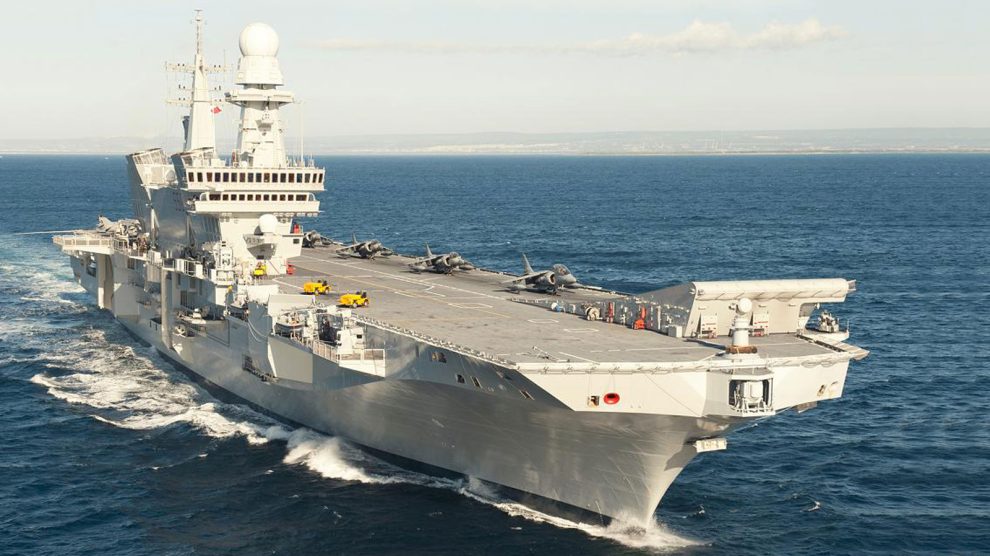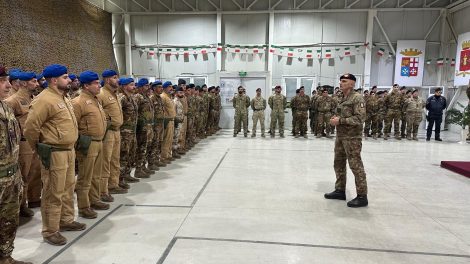The Cavour is headed to the Indo-Pacific. Italy’s flagship aircraft carrier will reach the area by the end of 2023 (or early 2024 at the latest). This was confirmed on Tuesday by Admiral Giuseppe Berutti Bergotto, Deputy Chief of the Navy General Staff, during a conference in Milan.
- The Cavour will sail alongside its battle group, consisting of a destroyer, a frigate and a refueller. “She will sail to Japan and then take the return route” while carrying out joint operations with the Allies, said the admiral.
- The flagship’s mission will be preceded by the Morosini offshore patrol vessel, “which will complete a four-month training cruise.”
Look Eastward. The flagship’s deployment underscores Italy’s intention to carve itself a more proactive and protective role in the Indo-Pacific region, in alignment with Euro-Atlantic and Asian allies and partners. European Armed Forces are increasingly interested in being present in the area, which the United States’ strategic doctrine identifies as China’s first circle of containment.
- The objective of such a presence is to inhibit Beijing’s potential hegemonic activities and preserve the concept of “free and open” navigation, as highlighted by former Japanese PM Shinzo Abe. Maritime security is central to these purposes, and NATO is looking to shift its political-diplomatic visions and activities towards the East.
And zoom out. The interconnected world is also smaller; a shift in balance can have wide repercussions elsewhere – especially in defence, a concept known as “indivisible security.” And Italy is growing ever more aware of the link between its traditional projection area, the extended Mediterranean, and the Indo-Pacific.
- Prime Minister Giorgia Meloni spoke of this concept during her recent visit to India. Broader alignment was also in the backdrop of her following top-level meetings with the leaders of the United Arab Emirates and Israel…
- … as well as Japan, with the two PMs upgrading the partnership to “strategic.”
Guido Crosetto is in Tokyo. Sending over the Cavour is just a part of Rome’s wider plan to extend its engagement in the Indo-Pacific area – which is welcomed by key regional actors such as Japan. As we anticipated, the Italian Defence Minister is in Tokyo (accompanied by Admiral Enrico Credendino, the Navy’s Chief of Staff) for a series of high-level meetings.
- On Tuesday evening, Minister Crosetto had a “cordial and fraternal meeting” with his Japanese counterpart Yasukasu Hamada (whom we interviewed). “Relations between Italy and Japan are fundamental for facing the geopolitical and technological challenges of the future,” he wrote.
- On Thursday, the Italian Minister will also take part in bilateral and trilateral meetings with his British counterpart Ben Wallace, who also emphasised the interconnection between Europe and the Pacific – both at the Pontignano Forum in Rome last month and on Wednesday at DSEI Japan, a three-day event being held in Chiba until Friday.
Next-gen jets. The trilateral will revolve around the Global Air Combat Programme (GCAP), a joint project to build the sixth-generation fighter aircraft based on the fusion of two pre-existing projects, the Anglo-Italian Tempest and the Japanese F-X. Work is underway to set up an international structure to manage the project by the end of the year.
- Meanwhile, the GCAP is already the main attraction at DSEI. All the main companies behind the project – namely Japan’s Mitsubishi Heavy Industries, Britain’s Bae Systems, and the Italian consortium involving Avio Aero, Elettronica, MBDA Italia and Leonardo – are there.
- It will be more of a “system-of-systems” rather than just a jet, specified General Luca Goretti, Chief of Staff of the Air Force, speaking to the Italian Parliament’s Defence Committee, explaining the technical challenges of operating remotely from across the world.
- Japan, he said, is “an opportunity to test the aircraft and train: to evaluate the travel times, the bureaucratic problems of flying over countries.” Tokyo has also chosen Italy to train, and the industry-aviation symbiosis is proving a success over there, too. “The Mediterranean has become too small a scenario; today, we have to intervene over long distances to ensure stability for our country.”





